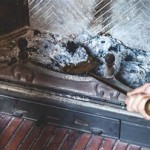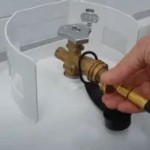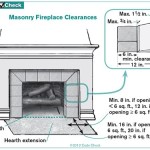The Enduring Appeal of Arts and Crafts Fireplace Screens
The Arts and Crafts movement, a significant force in late 19th and early 20th century design, continues to influence contemporary aesthetics. Characterized by a commitment to handcrafted quality, natural materials, and simplified forms, the movement sought to counter the mass-produced, often ornate, designs of the Victorian era. A key element in many Arts and Crafts interiors was, and remains, the fireplace, and the fireplace screen served as both a functional and decorative component, embodying the core principles of the movement.
Arts and Crafts fireplace screens were not merely utilitarian objects; they were conceived as integral parts of the overall design scheme of a room. Their construction emphasized the beauty of honest materials, such as copper, iron, wood, and occasionally, glass. Skilled artisans crafted these screens, often incorporating motifs drawn from nature, such as stylized flowers, foliage, and geometric patterns. The focus on craftsmanship and the rejection of excessive ornamentation set these screens apart from their Victorian predecessors.
The movement's emphasis on functionality is also evident in the design of these screens. They were intended to effectively contain sparks and embers while simultaneously adding an element of visual interest to the hearth. The height and width were carefully considered to suit the dimensions of the fireplace opening, and the construction was robust enough to withstand the heat and rigors of daily use.
Key Point 1: Materials and Construction Techniques
The selection of materials was paramount in the creation of Arts and Crafts fireplace screens. Copper was a particularly favored metal due to its malleability, its rich color, and its ability to be shaped and textured with relative ease. Copper screens often featured repoussé designs, a metalworking technique where patterns are hammered from the back to create raised relief. This technique allowed artisans to create intricate and visually appealing surfaces.
Iron was another commonly used material, often employed for its strength and durability. Wrought iron screens, fashioned by skilled blacksmiths, exhibited a sense of rugged elegance. The ironwork often incorporated scrolling patterns, stylized floral designs, or geometric motifs. The inherent strength of iron allowed for the creation of screens with openwork designs, providing maximum visibility of the fire while still offering protection from sparks.
Wood also played a role in Arts and Crafts fireplace screens, typically employed in the construction of frames or as decorative panels within the screen. Oak, a readily available and durable hardwood, was a popular choice. Wood elements were often stained to enhance the grain and provide a warm, natural aesthetic. Sometimes, decorative wooden panels were inlaid with copper or other metals to create a striking contrast.
Glass, though less frequently used, could be incorporated into Arts and Crafts fireplace screens. Stained glass, with its vibrant colors and intricate designs, was sometimes used to create focal points within the screen. Leaded glass panels, featuring geometric patterns or stylized floral motifs, were another way to add a decorative element while allowing light to pass through. The glass selection and placement contributed to the overall aesthetic coherence of the screen.
The construction techniques employed in crafting these screens further highlighted the emphasis on handcrafted quality. Riveting, soldering, and hammering were commonly used to join metal components. Wood elements were carefully fitted and joined using traditional woodworking techniques. The attention to detail and the use of time-honored methods resulted in durable and aesthetically pleasing objects.
Key Point 2: Design Motifs and Aesthetic Principles
Arts and Crafts fireplace screens frequently incorporated motifs drawn from nature. Stylized flowers, leaves, and vines were common decorative elements. These motifs were often rendered in a simplified and geometric manner, reflecting the movement's rejection of excessive ornamentation and its embrace of abstracted forms. The depiction of nature was not merely decorative; it was intended to connect the viewer to the natural world and to celebrate its beauty.
Geometric patterns also played a significant role in the design of these screens. Simple geometric shapes, such as squares, rectangles, and circles, were often arranged in repeating patterns to create visually appealing compositions. These patterns were not merely arbitrary; they were carefully considered to create a sense of balance and harmony. The use of geometric patterns reflected the movement's emphasis on order and clarity.
The overall aesthetic principles of the Arts and Crafts movement were evident in the design of fireplace screens. Simplicity, honesty, and functionality were paramount. The screens were not intended to be ostentatious displays of wealth or status; rather, they were meant to be functional and aesthetically pleasing objects that complemented the overall design of the room. The emphasis on handcrafted quality and the use of natural materials contributed to the overall sense of warmth and authenticity.
The color palettes used in Arts and Crafts fireplace screens were typically muted and earthy. Warm browns, greens, and yellows were common, reflecting the movement's affinity for natural tones. These colors were often used in combination with the natural colors of the materials, such as the reddish-brown of copper or the dark gray of iron.
The design of the surrounds and other fireplace elements also complemented the screen. Tiles were frequently used to create decorative surrounds, often featuring similar motifs and color palettes as the screen. Mantels were typically simple and understated, made from wood and finished with a natural stain. The overall effect was one of harmonious integration, where the screen, the surround, and the mantel worked together to create a visually appealing and functional hearth.
Key Point 3: Historical Context and Later Influence
The Arts and Crafts movement arose in response to the perceived excesses of the Industrial Revolution and the Victorian era. Proponents of the movement sought to revive traditional crafts and to promote a more honest and authentic approach to design. The movement was not merely an aesthetic phenomenon; it was also a social and political movement, advocating for improved working conditions for artisans and for a more egalitarian society.
Key figures in the Arts and Crafts movement, such as William Morris, John Ruskin, and Gustav Stickley, played a significant role in shaping the aesthetic principles and design philosophies that informed the creation of Arts and Crafts fireplace screens. Their writings and teachings emphasized the importance of craftsmanship, the beauty of natural materials, and the need for functional and aesthetically pleasing design.
The influence of the Arts and Crafts movement extended beyond the early 20th century. Its principles continue to inform contemporary design, and Arts and Crafts-inspired fireplace screens remain popular today. The emphasis on handcrafted quality, natural materials, and simplified forms resonates with contemporary sensibilities that value authenticity and sustainability.
The movement's impact can be seen in the revival of traditional crafts, the increasing demand for handcrafted goods, and the growing awareness of the importance of sustainable design. Arts and Crafts fireplace screens serve as tangible reminders of the movement's enduring legacy and its continuing relevance in the 21st century. The screens are not merely decorative objects; they are symbols of a design philosophy that values craftsmanship, authenticity, and the beauty of the natural world.
Modern interpretations of Arts and Crafts fireplace screens often incorporate contemporary materials and techniques while retaining the core principles of the movement. For example, screens may be made from recycled metals or sustainably harvested wood. The designs may be updated to reflect contemporary tastes, but the emphasis on handcrafted quality and the use of natural materials remains central. The continued popularity of Arts and Crafts-inspired fireplace screens demonstrates the enduring appeal of the movement's aesthetic and its lasting impact on design history.
The study of Arts and Crafts fireplace screens offers insights into the broader history of design and craft. These screens represent a specific moment in time, a reaction against industrialization and a celebration of handcrafted quality. By examining the materials, construction techniques, and design motifs of these screens, it is possible to gain a deeper understanding of the movement's values and its lasting legacy.

Arts Crafts Curved Fireplace Screen Minuteman International Achla Designs

Arts And Crafts Curved Fireplace Screen Screens Farmhouse

Arts Crafts Firepace Screen Custom Fireplace Screens Craftsman Built Ins

Arts Crafts Fireplace Screen Sonty Johns Antiques

Hand Made Arts Crafts Style Fireplace Screen By Matthew Weinberger Metalsmith Custommade Com

Arts Crafts Fireplace Screen Sonty Johns Antiques

Antique Fire Screen Arts And Crafts Movement Copper

Stylish Tools On The Hearth Design For Arts Crafts House Homes

Stylish Tools On The Hearth Design For Arts Crafts House Homes

Arts And Crafts Fire Screen By John Pearson Furniture Art Deco Fireplace Craft Design
Related Posts








